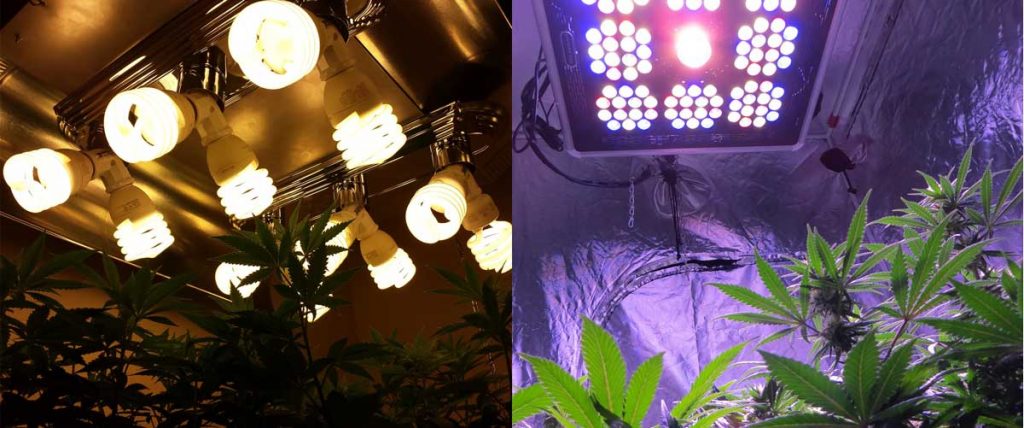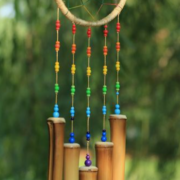Are you fond of Plantation and want to know that how to use Grow Lights for your plants? You are in the right place then. Here you will learn how to grow your plants just like nature and with the best results by the perfect usage of Grow Lights.
Plant Under Led Grow Light Stock Photo
If you are doing Seedling or Plantation that needs less light, then it will be good to go by putting them on the southern part of your home. This part will give sufficient light to your Plantation.
On the other hand, if you need Fruits and Vegetable plantations, they may not grow under less light unless you are lucky to have a Greenhouse attached to your home. In this case, you will need to Grow Lights, and here is the complete information to know how you use them or the different categories of Grow Lights.
If you use Grow Lights, then you can regulate the weather (temperature), and no need to worry about Pests that are present in the grass outside.
Categories of the Grow Light, Depending upon Spectrum:

When you go to buy Grow lights, firstly you need to have clear information about the Plantation you want to do and which in turn Grow lights have to be chosen as per the Spectrum needed.
On checking the Grow lights, you will see a label indicating some numbers like 2700K to 4000K. This indicates the Spectrum they support, and in turn, it gives the information about the coolness and warmth of the Grow lights.
The greater the number is lesser the warmth, and it can be checked as per Spectrum. Many plants need a warmth range of 2900K-3000K to get proper growth of Fruits and Flowers too. If you want to grow some specific vegetables, fruits, or flowers, you need to understand Spectrum.
If you want to grow some Green Vegetables or Root crops, you will need high Spectrum Bulbs than the Fruits and Flowers where you need low Spectrum Bulbs. You will also see some bulbs with full Spectrum and check online or go to the market to get them.
Click the link to check the Full Spectrum Grow Light for your Plants:
- lights
- lights
- lights
- lights
- lights
Types of Grow Lights
How to use Grow lights is quite essential to know, but before that, what matters a lot. So, there are mainly three types of Grow lights that are used much.
Led Grow Lights
These Grow Lights are used at a massive scale than the other types as they consume less electricity and give more output. They give the right intensity of light in more extensive areas as compared to other ones.
So, when you decide to do a Plantation in a large area, you can prefer LED Grow Lights without any second thought. They are reliable and produce very little heat that will be the safest and adaptable environment for the crops or plants you want to grow.
Fluorescent Grow Lights
A decent light bulb for your plants and cheaper than LED Grow Lights. These are used for small quantity plantation and specific plants individually. The best part of this is they come into bulb shapes and easily fit in a regular bulb socket.
If you do not want to have large fixtures and setups, Fluorescent Grow Lights is an option for sure.
They regulate the excellent weather of a specific plant as they have adequate light intensity required by a plant so that you can use them according to your convenience, even at small places and with no unique fixtures and sockets. These are the best for moderate light-seeking plants to grow naturally.
HID Grow Light
These Grow lights are also handy for large Plantation and well known before the LED Grow Lights come into the picture.
They are expensive than LED Grow lights but pertains well penetrating power for large scale crops. They consume more electricity, so not OK power efficient than the LED ones.
If you want to grow Tomatoes on a large Plantation, then HID Grow Lights is the best option as the light penetrates deep into the foliage than other Grow Lights.
This type of bulbs’ main drawback is that they need unique and large fixtures that can only be used and imposed in large areas and for large quantity crop plantation.
Types of HID Bulbs:
There are mainly two types of HID Bulbs
Metal Halide Bulbs
These bulbs are widely used for Vegetative Growth on a large scale, and these are labeled as MH bulbs. These are generally with High Spectrum.
High-Pressure Sodium Bulbs
These bulbs are widely used for Flowering plants, and these are labeled as HPS Bulbs.These have a Low Spectrum.
The above categories are used as a conjunction; however, they also require their unique Fixtures. Though they are not of much power efficient bulbs, they are trendy and widely used, assuming they are power efficient and with good results.
How to install Grow Lights:

How to use the Grow lights has already been discussed in detail, so now, for installation, we need to have a better idea as installation requires unique fixtures, which depends on the quality and quantity of bulbs.
Construct a Rack
Proper construction of the rack is quite essential for the plant’s growth. They should be adjusted at an appropriate height for the proper growth of plants and your crops.
When plants grow to a definite height and level with time, the rack where the bulbs have been installed should be adjusted accordingly.
For this, you can use the chain method by which you hang your bulbs or use pulleys to adjust the height of bulbs from Plants.
You can create this installation on your own or purchase them online for better fixtures and adjustments.
B087JL7FYG
Number of Bulbs Required
This is an essential factor in how much vegetation and Plantation need how many bulbs. The vegetation requires specific watt for the best results.
The crops like Tomato’s need more watts between 45-65 Watts for best results and other edible crops need less wattage between 25-30 Watts.
Wattage information reflects on the label of the bulb. You can check while purchasing them.
Better to know about wattage per square foot required by specific crop, better the results.
You can calculate the total watts required per square foot by merely calculating the number of bulbs required to touch the desired watt range in a specific area of Plantation.
Add the Appropriate Timers
Plugin your bulbs and leave them as it is throughout the day is not wise. So, plug your bulbs in a manner that they give appropriate light at a particular point in time.
If the temperature rises above the specific level, then proper ventilation should also be installed.
To manage this as per its own, plug the bulbs as per the Timer so the light will be adequate at the same time of every day. The low down according to the temperature rise and at full strength according to temperature falls.
Is There Any Time Frame the Grow Lights Should Be Turned on for?
How to use Grow Lights with proper timings is also very important. Never switch on the bulbs for an entire day. It may hinder the growth, and yield will not be up to the mark. It may lead to plants and crop damage as well.
As per the study, 16-17 hours of light is sufficient for edible crops to grow smoothly. 5-7 hours of darkness is also a significant factor for plants.
More light is needed when you grow something indoor than the one you grow outside, so proper timing of light is a crucial point of concern.
When plants grow to an appropriate height and level, you can fix the stand height accordingly, and the timing of light adjustment should also be checked.
Some Major Height Adjustments for the Best Yield:
- Fluorescent Grow light bulbs: 4-13 inches
- HID Grow light bulbs: 26-62 inches
- LED Grow light bulbs: 14-25 inches











Comments